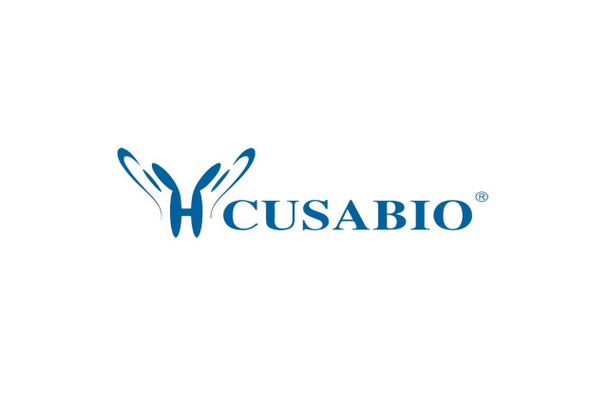Cusabio Human Recombinants
Recombinant Human Lysyl oxidase homolog 3 (LOXL3), partial | CSB-EP013042HU1
- SKU:
- CSB-EP013042HU1
- Availability:
- 3 - 7 Working Days
Description
Recombinant Human Lysyl oxidase homolog 3 (LOXL3), partial | CSB-EP013042HU1 | Cusabio
Alternative Name(s): Lysyl oxidase-like protein 3
Gene Names: LOXL3
Research Areas: Signal Transduction
Organism: Homo sapiens (Human)
AA Sequence: DRPLHMLYCAAEENCLASSARSANWPYGHRRLLRFSSQIHNLGRADFRPKAGRHSWVWHECHGHYHSMDIFTHYDILTPNGTKVAEGHKASFCLEDTECQEDVSKRYECANFGEQGITVGCWDLYRHDIDCQWIDITDVKPGNYILQVVINPNFEVAESDFTNNAMKCNCKYDGHRIWVHNCHIGDAFSEEANRRFERYPGQTSNQII
Source: E.coli
Tag Info: N-terminal 6xHis-GST-tagged
Expression Region: 401-608aa
Sequence Info: Partial
MW: 55.7 kDa
Purity: Greater than 85% as determined by SDS-PAGE.
Relevance: Protein-lysine 6-oxidase that mediates the oxidation of peptidyl lysine residues to allysine in target proteins (PubMed:17018530, PubMed:28065600). Catalyzes the post-translational oxidative deamination of peptidyl lysine residues in precursors of elastin and different types of collagens, a prerequisite in the formation of cross-links between collagens and elastin (PubMed:17018530). Required for somite boundary formation by catalyzing oxidation of fibronectin (FN1), enhancing integrin signaling in myofibers and their adhesion to the myotendinous junction (MTJ) (By similarity). Acts as a regulator of inflammatory response by inhibiting differentiation of naive CD4+ T-cells into T-helper Th17 or regulatory T-cells (Treg): acts by interacting with STAT3 in the nucleus and catalyzing both deacetylation and oxidation of lysine residues on STAT3, leading to disrupt STAT3 dimerization and inhibit STAT3 transcription activity (PubMed:28065600). Oxidation of lysine residues to allysine on STAT3 preferentially takes place on lysine residues that are acetylated (PubMed:28065600). Also able to catalyze deacetylation of lysine residues on STAT3 (PubMed:28065600).
Reference: "Lysyl oxidase 3 is a dual-specificity enzyme involved in STAT3 deacetylation and deacetylimination modulation." Ma L., Huang C., Wang X.J., Xin D.E., Wang L.S., Zou Q.C., Zhang Y.S., Tan M.D., Wang Y.M., Zhao T.C., Chatterjee D., Altura R.A., Wang C., Xu Y.S., Yang J.H., Fan Y.S., Han B.H., Si J. Chin Y.E. Mol. Cell 65:296-309(2017)
Storage: The shelf life is related to many factors, storage state, buffer ingredients, storage temperature and the stability of the protein itself. Generally, the shelf life of liquid form is 6 months at -20?/-80?. The shelf life of lyophilized form is 12 months at -20?/-80?.
Notes: Repeated freezing and thawing is not recommended. Store working aliquots at 4? for up to one week.
Function:
Involvement in disease:
Subcellular Location:
Protein Families:
Tissue Specificity:
Paythway:
Form: Liquid or Lyophilized powder
Buffer: If the delivery form is liquid, the default storage buffer is Tris/PBS-based buffer, 5%-50% glycerol. If the delivery form is lyophilized powder, the buffer before lyophilization is Tris/PBS-based buffer, 6% Trehalose, pH 8.0.
Reconstitution: We recommend that this vial be briefly centrifuged prior to opening to bring the contents to the bottom. Please reconstitute protein in deionized sterile water to a concentration of 0.1-1.0 mg/mL.We recommend to add 5-50% of glycerol (final concentration) and aliquot for long-term storage at -20?/-80?. Our default final concentration of glycerol is 50%. Customers could use it as reference.
Uniprot ID: P58215
HGNC Database Link: N/A
UniGene Database Link: N/A
KEGG Database Link: N/A
STRING Database Link: N/A
OMIM Database Link: N/A









